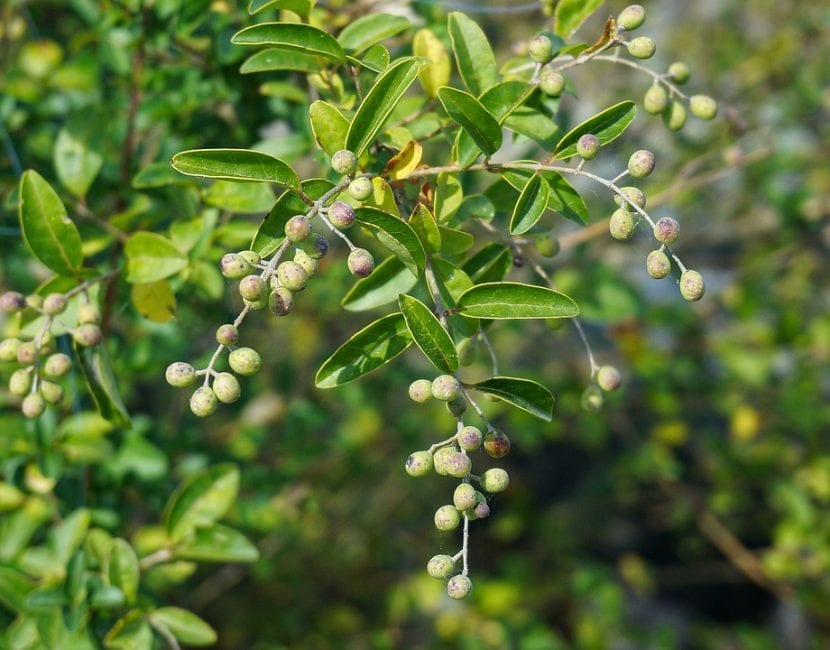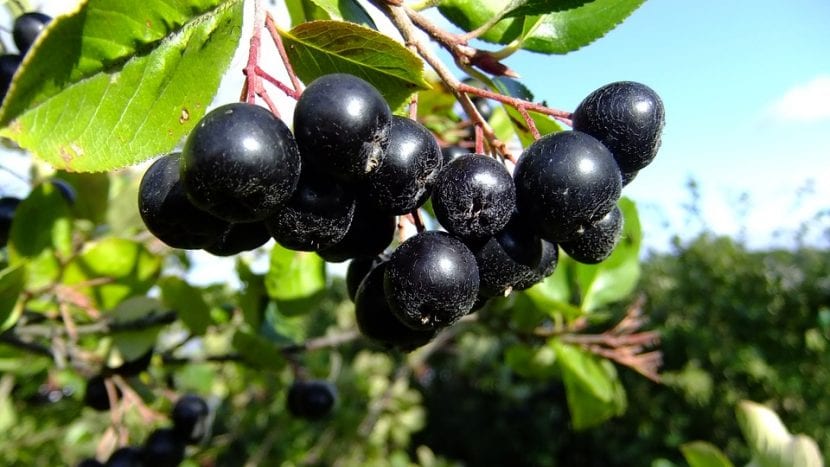
Aronia is one of those shrubs that have it all: beauty, easy maintenance and, as if that were not enough, its fruits have culinary uses ... although not raw 😉. In addition, it has the perfect height to be able to stand directly on the ground, or in a pot.
So if you have a free space in the garden, patio or balcony, and you want to fill it with a plant that is useful to you, then we are going to introduce you to the Aronia.
Origin and characteristics
It is a genre of deciduous shrubs originating in eastern North America. They produce alternate, simple and oblanceolate leaves, with slightly serrated margins. These are green, except in autumn when they turn reddish before falling.
The flowers are grouped in corymbs, and are white and small, about one centimeter in diameter. The fruit is a small pommel, about the size of a cherry.
Species
The species of the genus Aronia are:
- aronia arbutifolia: reaches between 2 and 4 meters, sometimes 6m.
- Aronia melanocarpa: its common name is black aronia, and it reaches 2-3 meters.
- Aronia x prunifolia: it is believed that it could be the same as the Crataegus prunifolia. It is a 7-9 meter tall tree.
What are their cares?
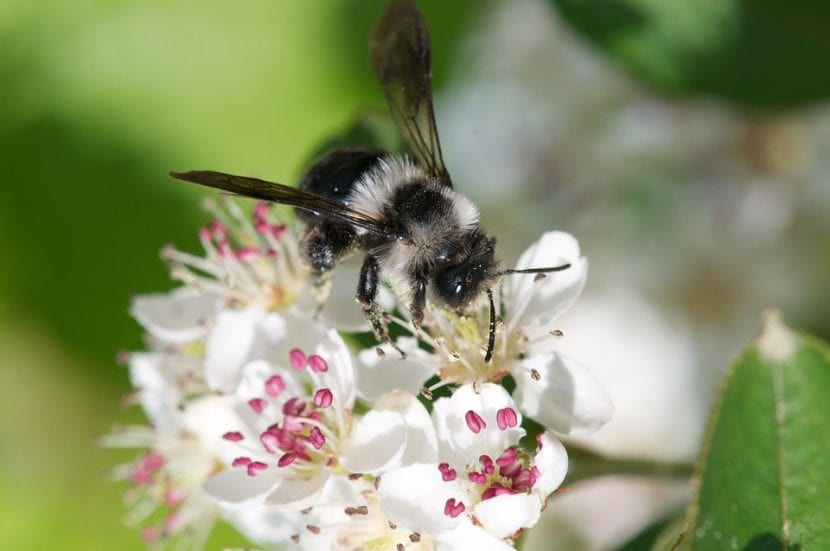
Do you want to have a copy? If so, we recommend that you provide the following care:
Location
The Aronia is to be had abroad, in a place where the sun shines directly, ideally throughout the day. In semi-shade its flowering is scarce, and therefore its productivity is low.
Earth
It depends on where you are going to have it:
- Flower pot: it is advisable to fill it with substrate for horticultural plants, like this one they sell here.
- Garden: grows in fertile, well-drained soils.
Irrigation
The frequency of irrigation will be determined by the climate in the area, as well as the season of the year in which you are. Thus, the warmer and drier it is, the more often it will be necessary to water than if it were cold and humid.
So when in doubt it will always be better to check the humidity of the soil with a thin wooden stick for example, since this way there will be no risk of overwatering, or that the roots dry out.
And if you still do not trust, you should know that you should water an average of 3-4 times a week in the middle of summer, and an average of 2 times a week the rest of the year.
Subscriber
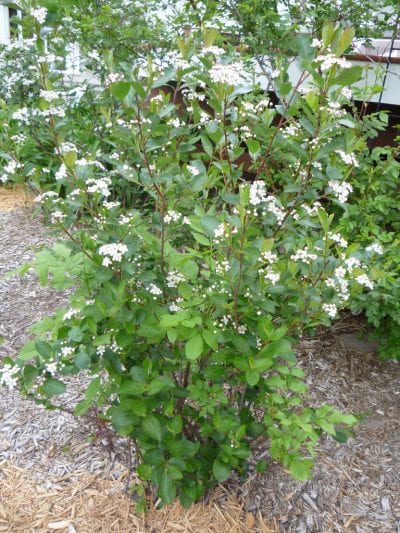
Image - Flickr / Kjeannette
From early spring to late summer It must be paid once a month or every fifteen days with organic fertilizers, with guano, mulch, compost, or others that you have at home.
Keep in mind that plants not only need water to grow, but they also need "food", otherwise over the months the soil will run out of the necessary nutrients so that it can continue to develop healthily.
Multiplication
The Aronia multiplies by seeds and cuttings in spring. Let's see how to proceed in each case:
Seeds
- First, put them in a glass of water for 24 hours.
- The next day, discard those that have been floating as they most likely will not germinate.
- Now, fill a pot with universal growing medium (for sale here).
- Then sow the seeds on the surface, covering them with a thin layer of substrate. It is important that they are not piled up. In fact, it is always going to be better to put a maximum of two seeds per pot to guarantee the survival of the seedlings.
- Finally, sprinkle copper or sulfur to prevent fungus, place the seedbed outside, in full sun, and give it a good watering 🙂.
Thus, they will germinate in about two weeks.
Cuttings
To multiply it by cuttings you have to cut a piece of about 30cm long, of soft wood, impregnate the base with rooting hormones (for sale here) and plant it in a pot with vermiculite (for sale here).
If all goes well, it will produce its own roots after a month or so.
Plagues and diseases
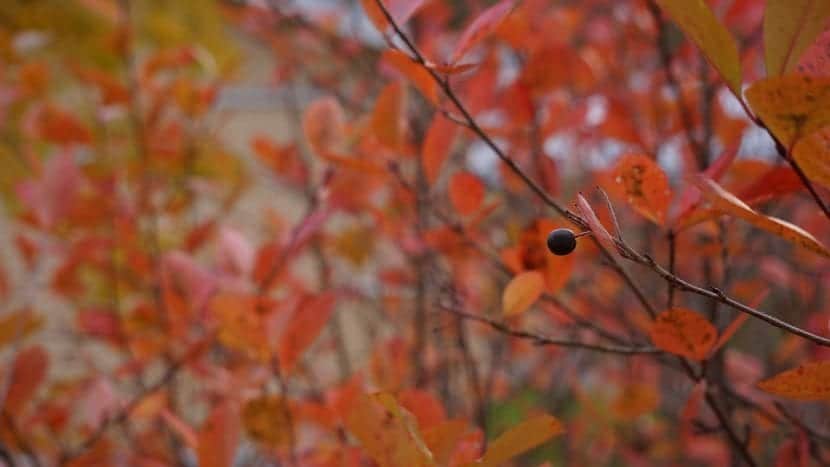
It's very tough. However, if the growing conditions are not adequate, it can be affected by mushrooms -as a consequence of excess irrigation-, or by mealybugs y red spiders if the environment is very dry.
In the first case, it is necessary to treat it with fungicide and space the waterings, and in the second, both pests can be treated with diatomaceous earth (for sale here).
Pruning
Late winter Dry, diseased, weak branches or those that are broken must be cut. Likewise, it will also be a good time to give it a training pruning; that is, to trim the branches in such a way that they have a rounded and / or compact appearance.
Harvest
The fruits are collected in autumn.
Rusticity
Resists cold and frost up to -18ºC.
What is Aronia for?
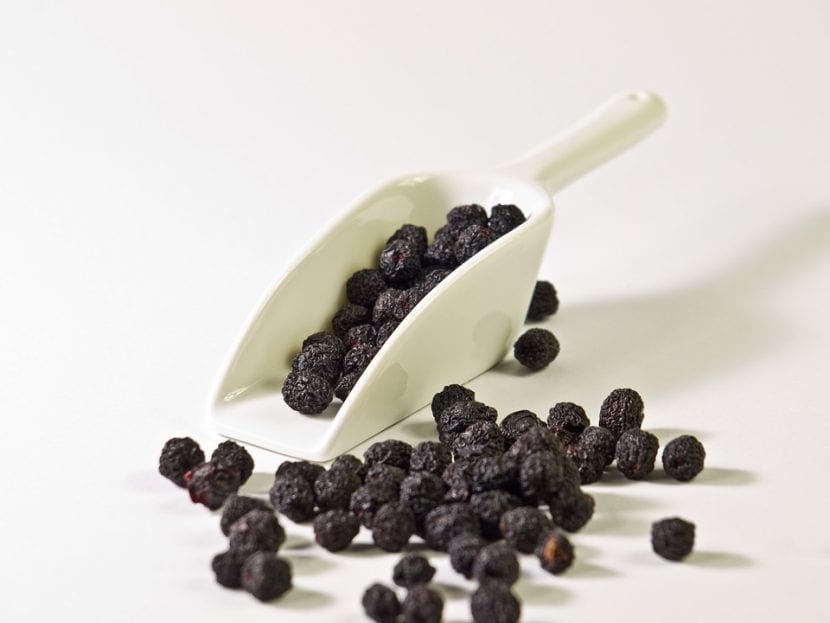
Ornamental
It is a very decorative and easy-care genus of plants. It looks great in pots, or in groups in the garden / orchard.
Culinary
With the fruits they are made jams, syrups and infusions.
Medicinal
Again, the fruits have antioxidant and astringent properties.
What did you think of the Aronia? 🙂
